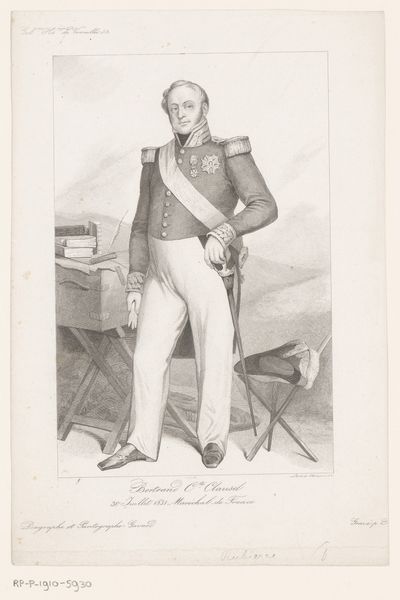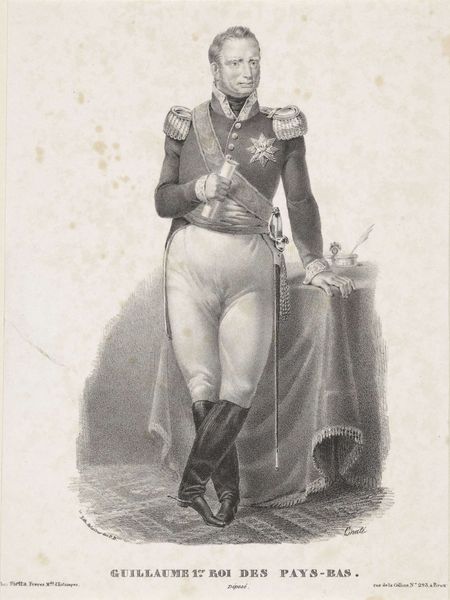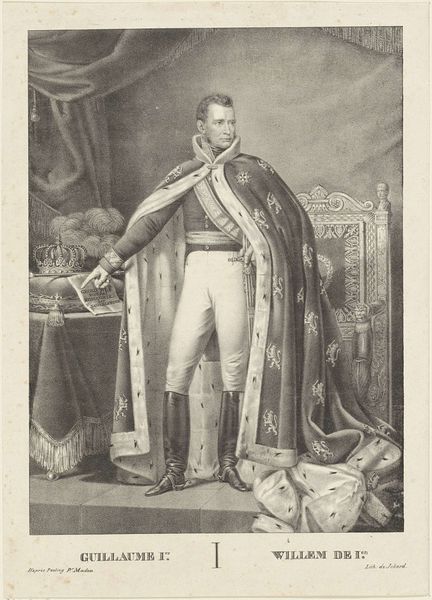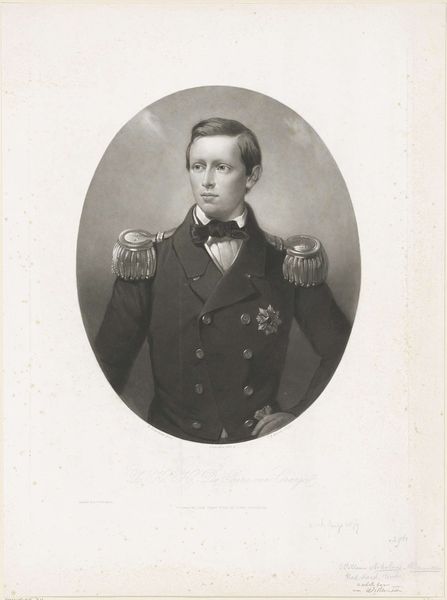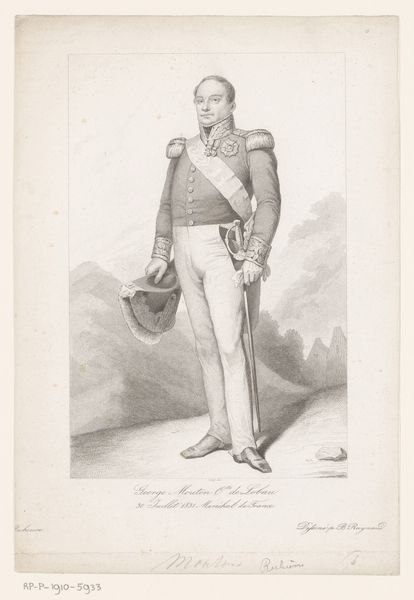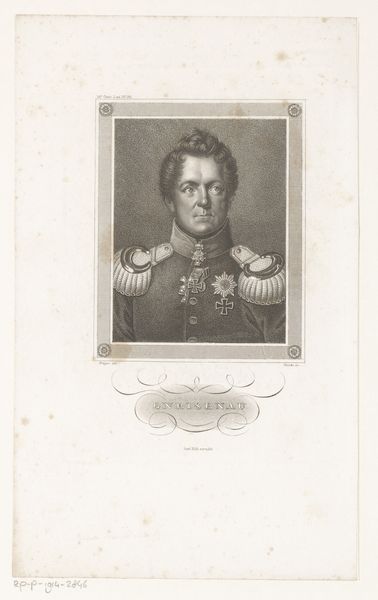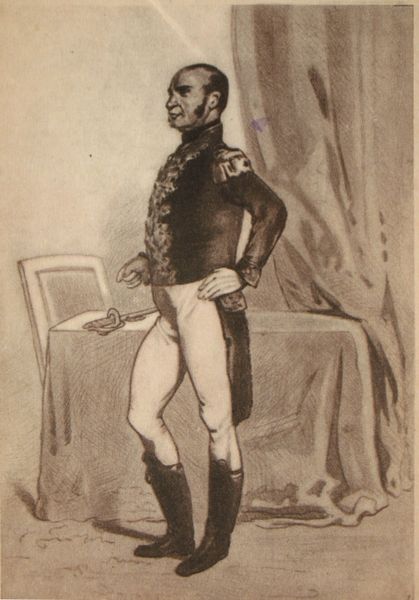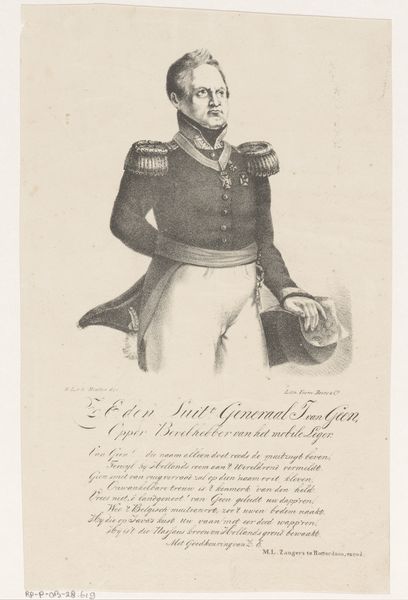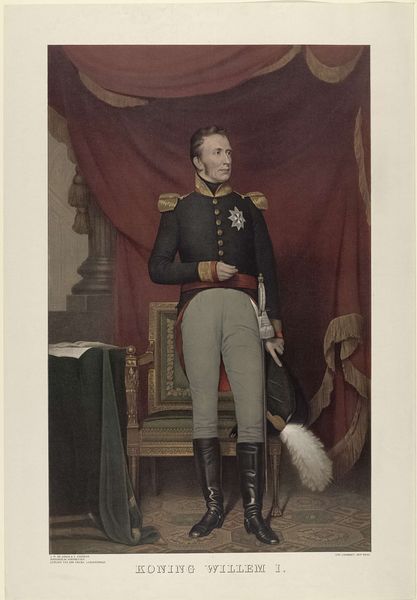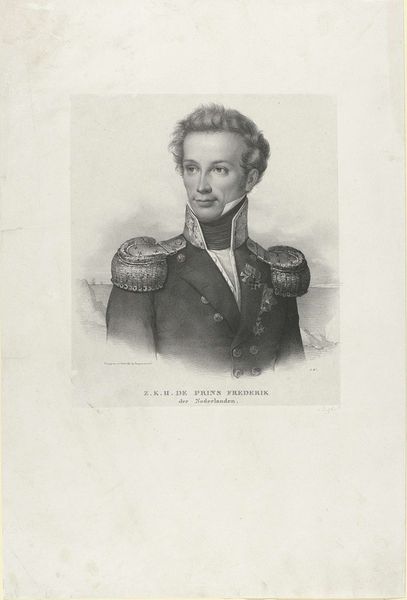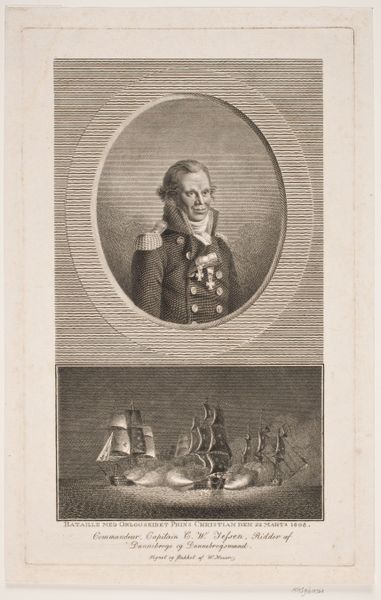
print, engraving
#
portrait
#
neoclacissism
# print
#
old engraving style
#
archive photography
#
historical photography
#
19th century
#
pencil work
#
history-painting
#
engraving
Dimensions: height 406 mm, width 281 mm
Copyright: Rijks Museum: Open Domain
This portrait of Willem I Frederik, King of the Netherlands, is an engraving, a printmaking technique dependent on the precision of a skilled hand. Look closely at the thin lines that describe the king’s face, his uniform, and the textures of the drapery behind him. The process begins with a metal plate, traditionally copper. The artist uses a tool called a burin to incise lines directly into the plate. Ink is then applied to the plate, filling these grooves. The surface is wiped clean, and the image is transferred to paper under high pressure, resulting in the raised lines you can see and feel on the print’s surface. Engraving was often used for reproductive purposes; its capacity for detail made it ideal for disseminating images widely. Consider this portrait not just as an image of a king, but as a manufactured object, produced through skilled labor, capable of circulating throughout society. This brings art closer to the worlds of commerce and politics, reminding us that images, like commodities, have a social life.
Comments
No comments
Be the first to comment and join the conversation on the ultimate creative platform.
